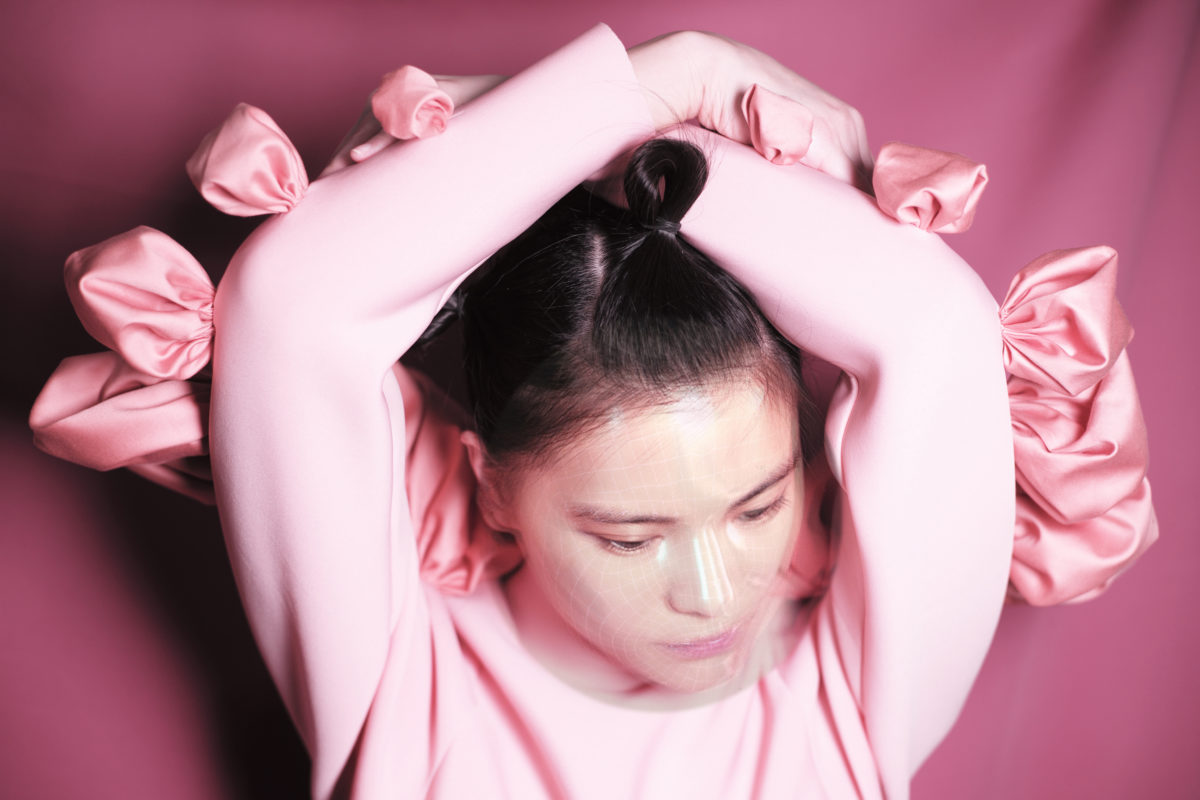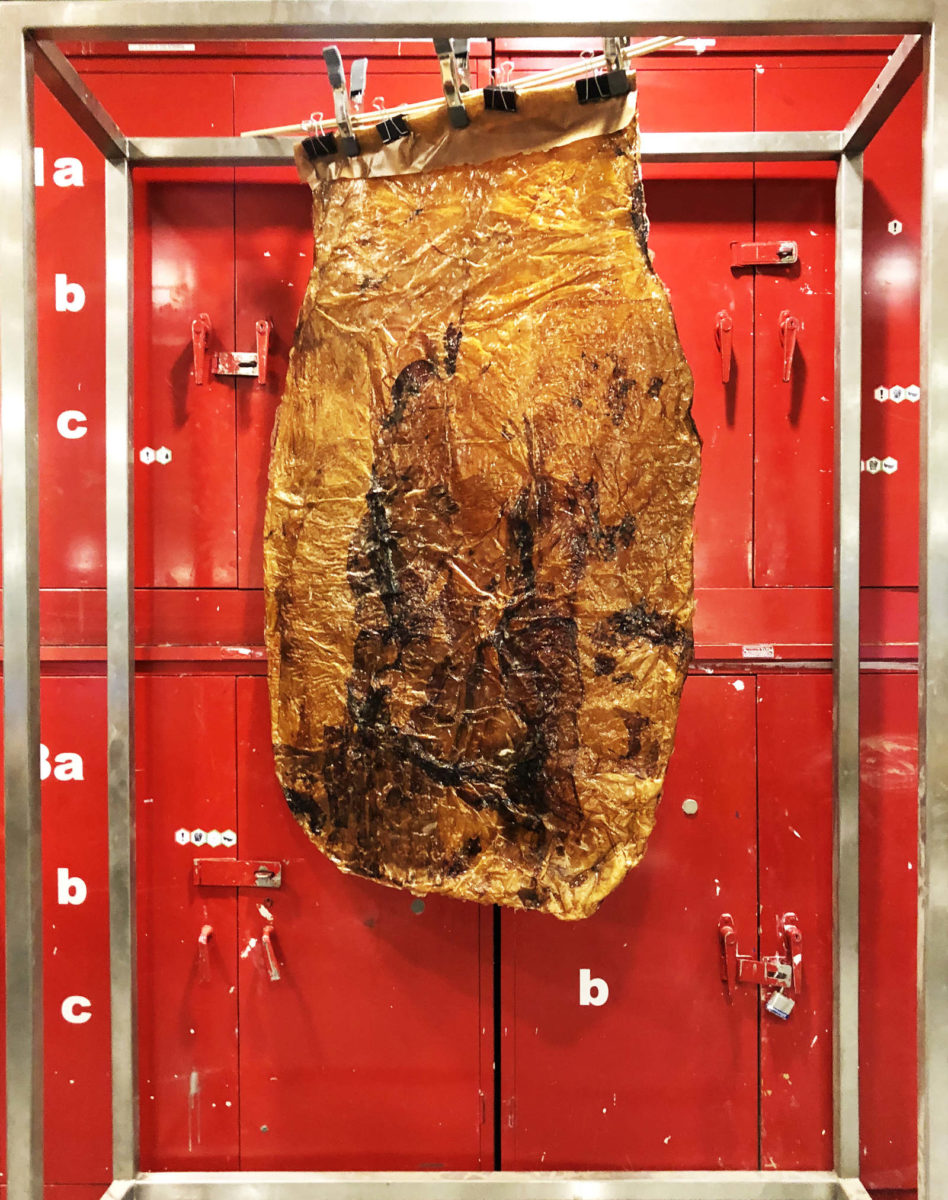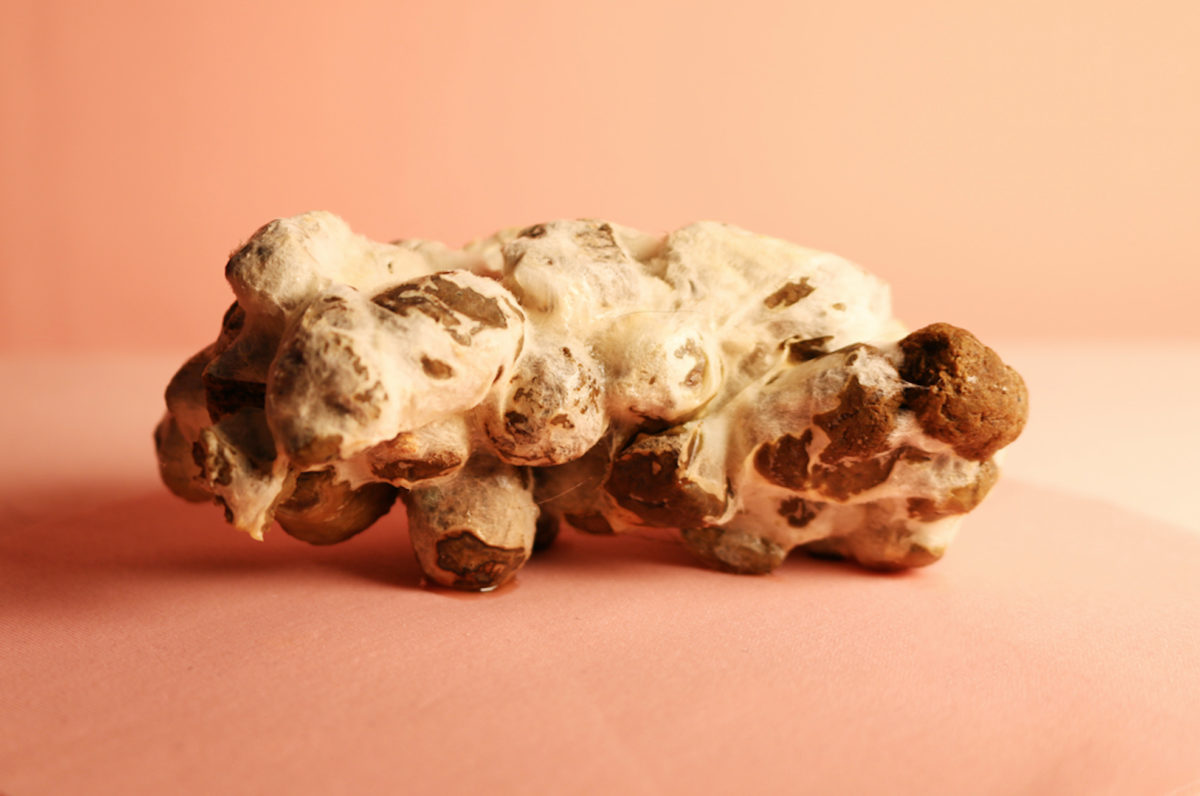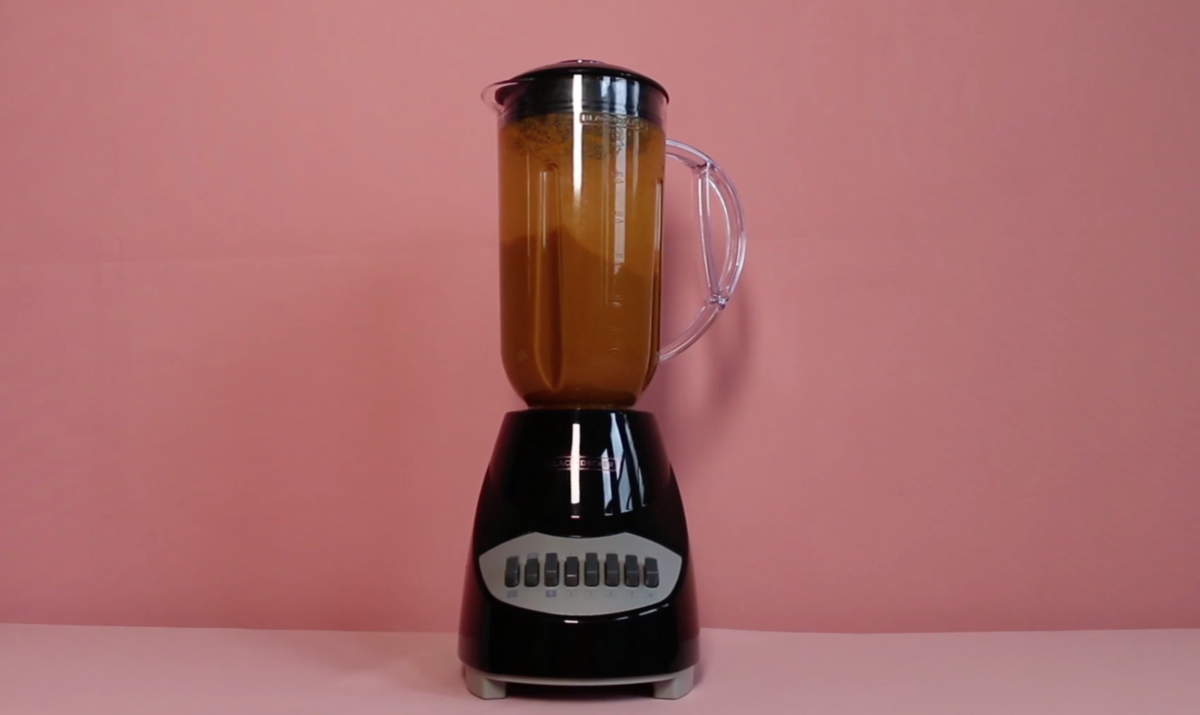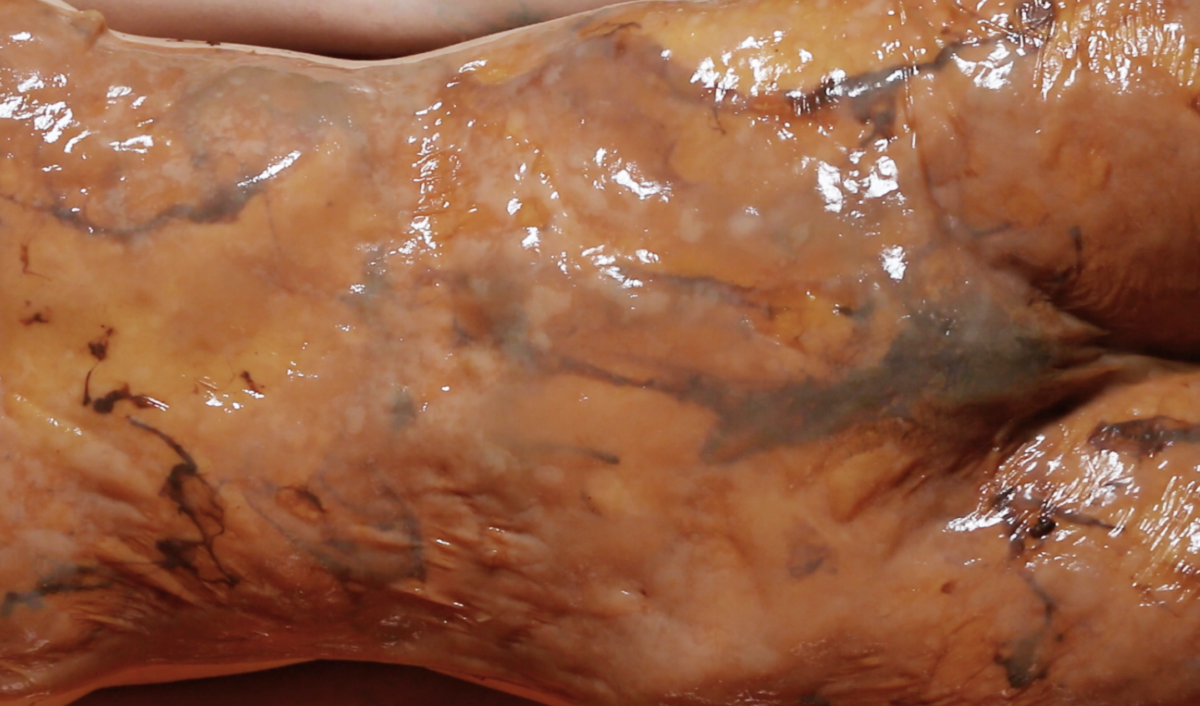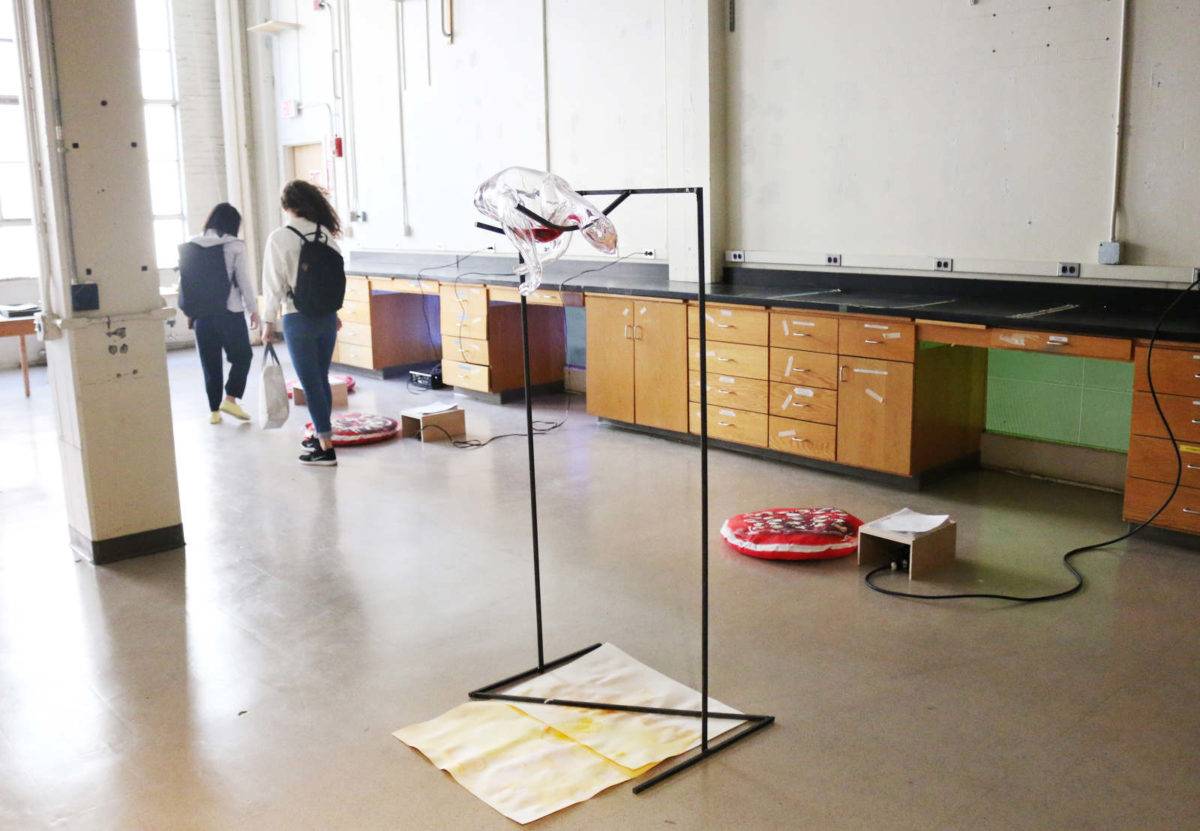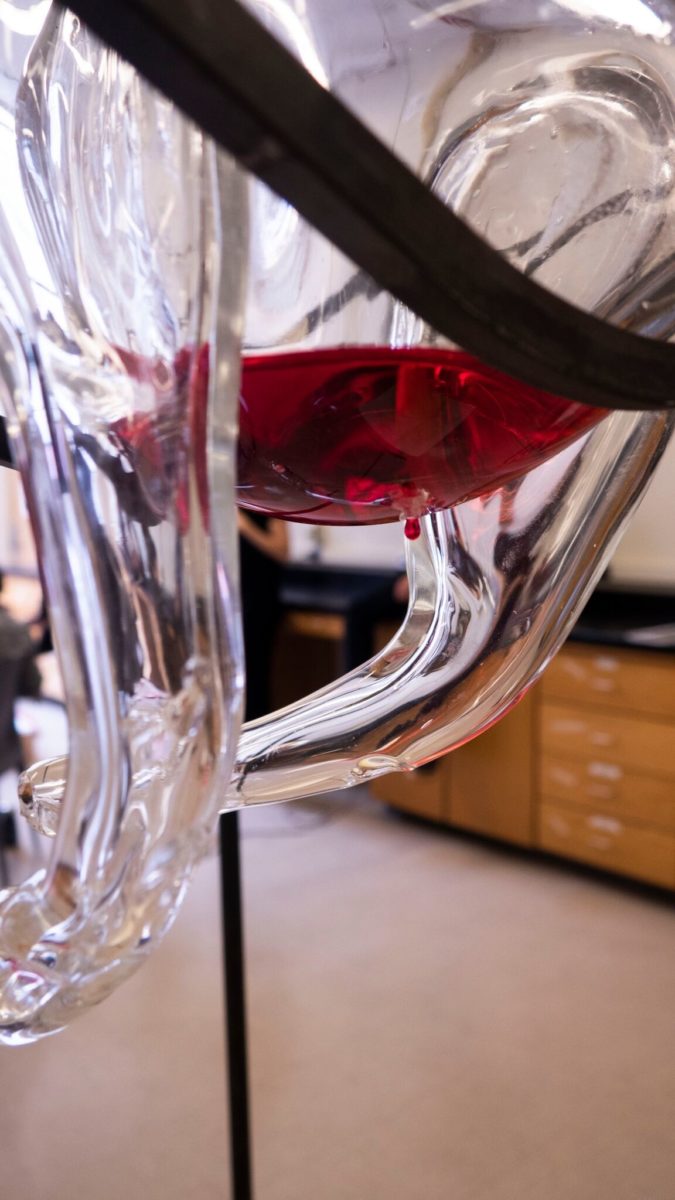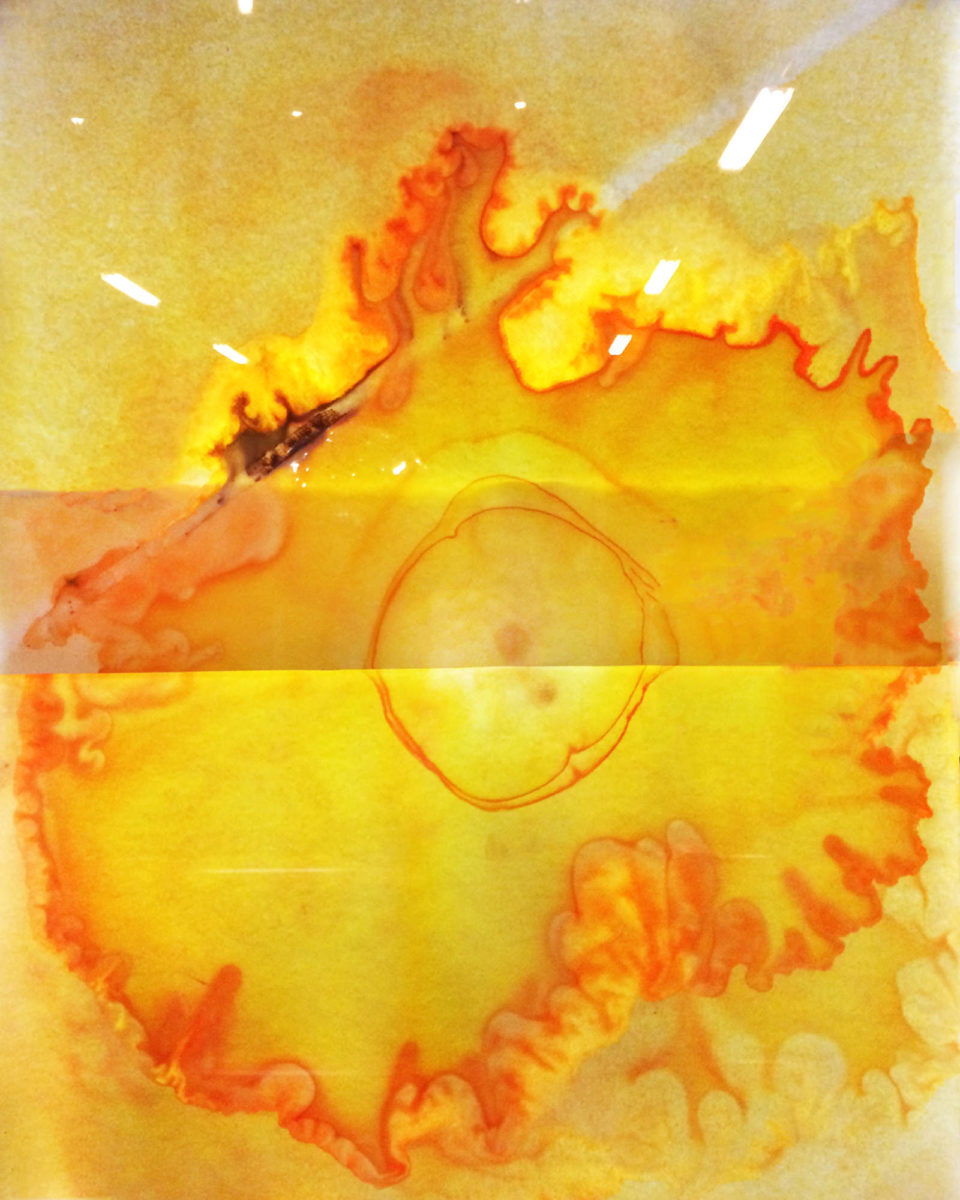← 2020 Schnitzer Prize in the Visual Arts
Rae Yuping Hsu
Second Place, 2020 Harold and Arlene Schnitzer Prize in the Visual Arts
More about the artist
yellowsoup
Bacterial cellulose, official documents, hair, mold, text. Web-based experience. 2020.
Investigating the affective and political possibilities opened up by the microbial, this project looks for ruptures to create shifts in sense-ablilities. The project unfolds as a website, an audio-visual-textual assembly of questions, ideas, and reflections connecting my previous body of work with the complexities and potencies of the moment we are living through.
The word “ferment” means a commotion or an excitement; in that regard the website is divided into four scores of commotions. The first commotion is a prologue into kinship, the second is a speculation of microbial persuasions on human desires, the third is on fecal transplant and interspecies queering, and finally the fourth commotion is a meditation on the transgression of identity and boundaries. The site navigates like a virus weaving through the membrane of different bodies and categories—life and non-life, existence and citizenship, text and meaning—and in the weaving, erupts new forms of being.
Click on RSVP to enter site.
OOloI spacesuit
Slime mold, bacterial cellulose, scuba fabric, and bioplastic. Suit 23 x 52 x 5in; Inflatable 4 x 2.5ft. 2020.
Working with the MIT Space Exploration Initiative, this project is a performance that seeks to project alternative imaginaries about space exploration through the lenses of panspermia, symbiosis, and kinship. Based on a rethinking of the “first contact,” the script shifts perspectives to a microbial scale that is imperceptible to humans. Donna Haraway describes Lynn Margulis’ Endosymbiotic theory as “critters eating critters and getting indigestion.” We’d like to act out this idea in microgravity.
A performer wearing a bioplastic helmet and slime mold-inoculated spacesuit becomes one with a scoby inflatable as an ode to multi-species living in space. The inflatable is made with bacterial cellulose produced via fermentation. For us, fermentation is a practice of co-living, it embodies building with communities of humans and more-than-humans. In response to the free market frontierism that has led to ongoing privatization, extraction, and domination on Earth, we find it urgent to import the language of kinship into narratives of the interplanetary ecologies we might one day become part of.
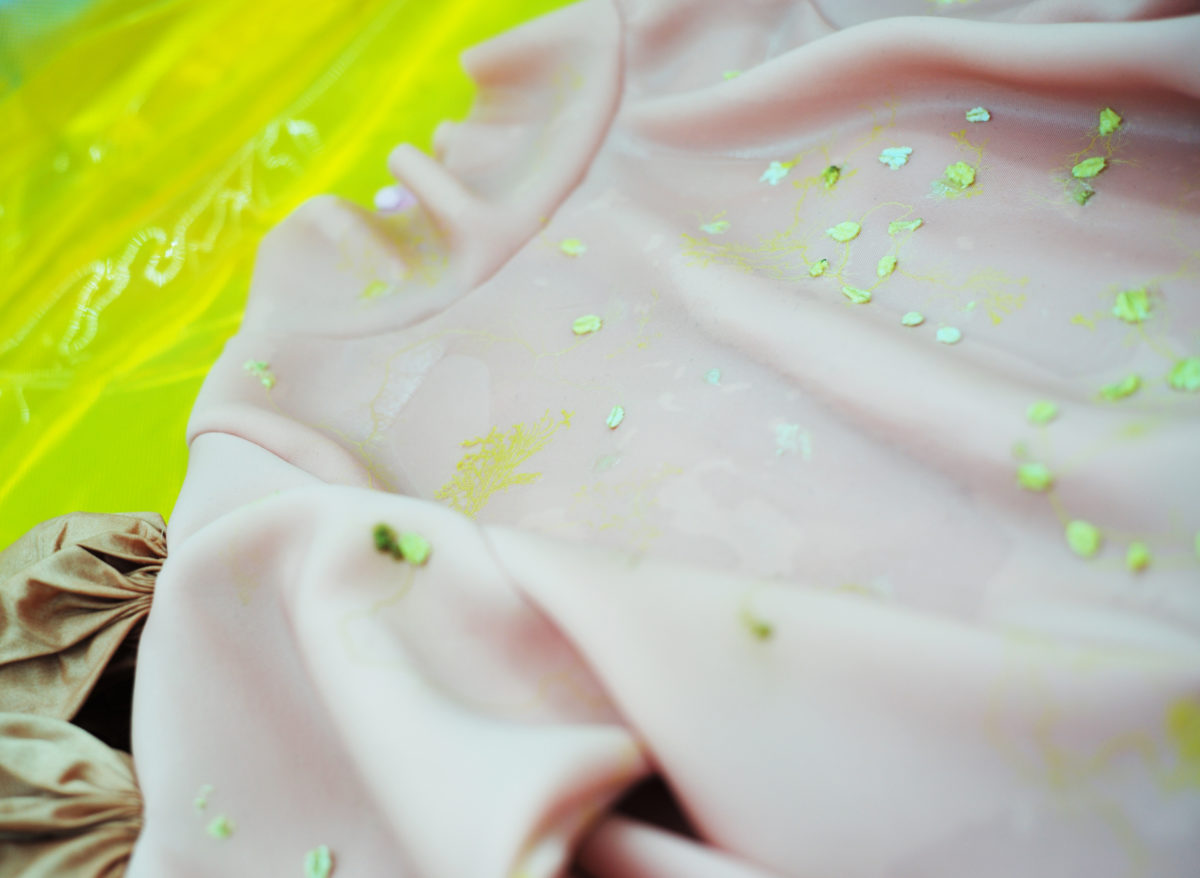

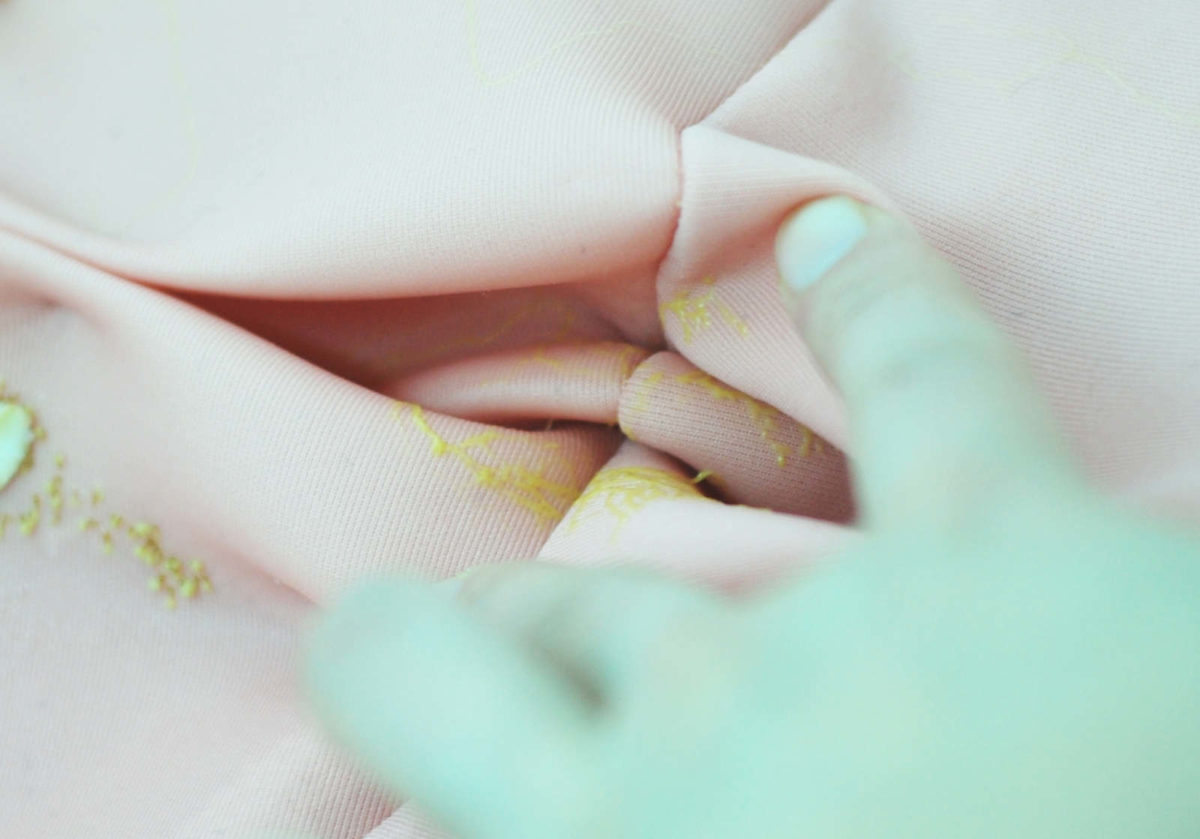
Mistress Kinship
Blender, fecal matter, mold, silicone, scuba fabric, cat tail. Video. 2020.
This project appropriates the language and tools of fecal transplant, the practice of transplanting gut microbiome from a healthy donor into a patient, via fecal matter inserted into the rectum. The persona of Mistress Kinship is created as a speculation on how interspecies fecal transplant might lead to a posthuman becoming and feeling of kinship.
The safe word is kombucha
Scoby, slime, wood, slime mold, scuba fabric, fermented vegetables. Video. 2020.
The vocabulary of dom/sub is employed to star the scoby in an overt position of power. The underlying postulation in this work is the effect of the microbial on human desires, and the work is my reckoning with this relationship via an attempt to confuse power dynamics. This becoming—becoming contaminated, dominated, non-human, more-than-human, host, parasite—is one that is ridden with danger and seduction.
The FBS: A meditation device
Glass, phenol red, paper, lactic acid, metal. 2019.
A 500ml bottle of Fetal Bovine Serum (FBS), commonly referred to as “cell food” or just “media” in the biotech industry, contains the blood serum of one cow fetus. Blood is drained via cardiac puncture, centrifuged and filtrated to obtain the serum, and dyed with phenol red, a pH indicator. This dye gives the serum its iconic fuchsia tint and it reacts with acidic cell metabolites to turn yellowish, reminding researchers to replenish the medium. This meditative time piece drips at one second intervals and the drips turn yellow upon immediate contact with paper brushed with lactic acid.
This project employs the language, aesthetics, and theoretical framings of biotech to question its collective imaginaries. How clean is “clean meat” aka “lab grown meat?” Which narratives are being held in the spotlight while others are made less visible under the capitalist logic? In what ways can we re-imagine anthropocentric definitions of livability to include the bodies and agencies of other beings?
About the Artist
Rae Yuping Hsu is committed to foraging and presenting moments that point to a primordial intrusion of alterity, an intrusion that would be crucial to the onto-epistemological understanding of what is a self. Her research employs the science of microbiome and fermentation as methods of inquiry into endosymbiotic aesthetics. Her practice is research-based and materially-informed, engaging a range of materials from glass to hair; official documents to fecal matter.
Fermentation stands in as a muse for the body with its symbiotic affordances, to create a space where empathic gut feelings can emerge. Cultivating entangled forms of both collaboration and contamination. Through her work she explores the grounds that science and technology are laid upon, often troubling its histories and conditions. The authority of scientific language is undermined by a combination of abjection and seduction, inviting the viewer into an affective relationship rather than an alienating one. The establishment of categories is contaminated with perverse pleasure in the confusion of boundaries, breaking into those gated communities of sense and sensibility. The doctrine of humanity, known for being a project of exclusion, is decoded via microbial plural perspectives. Her works probe at possibilities to think of contaminants beyond the metaphor of invasion, towards an invitation.


